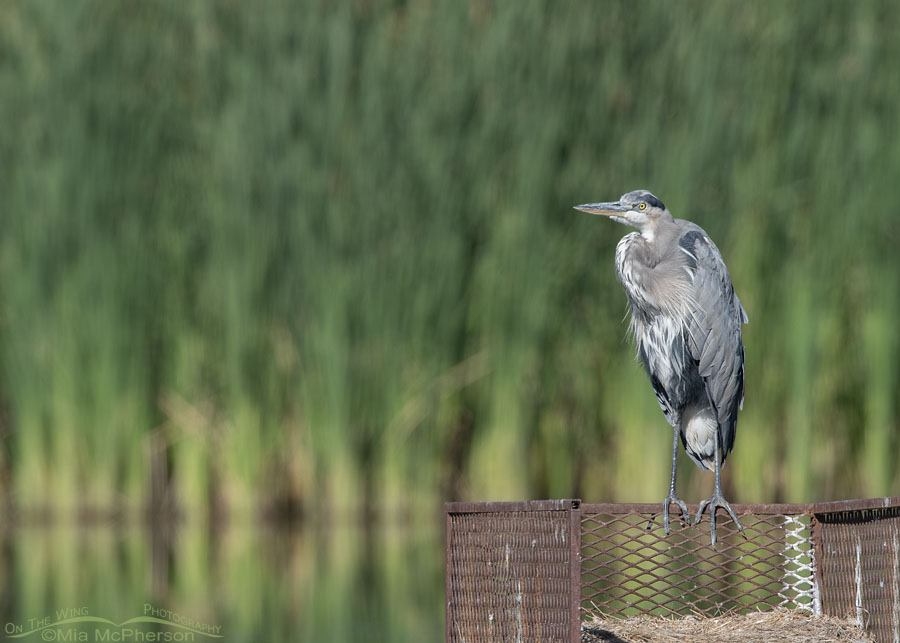I photographed this late summer, adult Great Blue Heron resting on a human-made nest box at Farmington Bay Waterfowl Management Area a few days ago.
 Late summer Great Blue Heron at Farmington Bay WMA – Nikon D500, f7.1, 1/1250, ISO 500, Nikkor 500mm VR with 1.4x TC, natural light
Late summer Great Blue Heron at Farmington Bay WMA – Nikon D500, f7.1, 1/1250, ISO 500, Nikkor 500mm VR with 1.4x TC, natural light
This heron got me thinking about all the times I’ve captured images of this species over the years in various locations and weather conditions.
I’ve photographed Great Blue Herons in Florida, Oklahoma, Virginia, Montana, Idaho, Utah, and beyond. I have photographed them on the Gulf Coast, on the shores of the hypersaline Great Salt Lake, near alpine creeks, rivers, streams, swamps, ponds, fresh and saltwater marshes, sloughs, and wetlands. I’ve even taken photos of them in desert ranchlands and high in the mountains. Plus, I’ve photographed them close to home in urban settings.
I have taken images of Great Blue Herons in soft morning light, evening light, heavy fog, thick snow, backlit, sidelit, and in 35-knot winds with the Belt of Venus and the Earth Shadow behind them. I’ve photographed them in temperatures well below freezing and in temps over 100°F.
My cameras have focused on these herons hunting, fishing, resting, courting, coughing up pellets, eating, displaying, flying, landing, fighting, nesting and more. I’ve photographed both adult and immature Great Blue Herons.
Over the years, I have been blessed to have Great Blue Herons in my viewfinder thousands upon thousands of times. Despite the fact that Great Blue Herons are abundant and found in many different habitats, I still get excited when I can find and photograph them.
Great Blue Herons in my viewfinder bring me joy. They get my heart pumping. I suspect that they always will. Every freaking time.
Life is good.
Mia
Click here to see more of my Great Blue Heron photos plus facts and information about this species.


What a stately and magnificent bird. Great Blue Herons are beautiful. Thanks Mia.
I’ve seen a few lately but not close enough to get a good photo.
I am not surprised that they get your heart thumping. They would mine too.
My favorite heron!-Jeri S